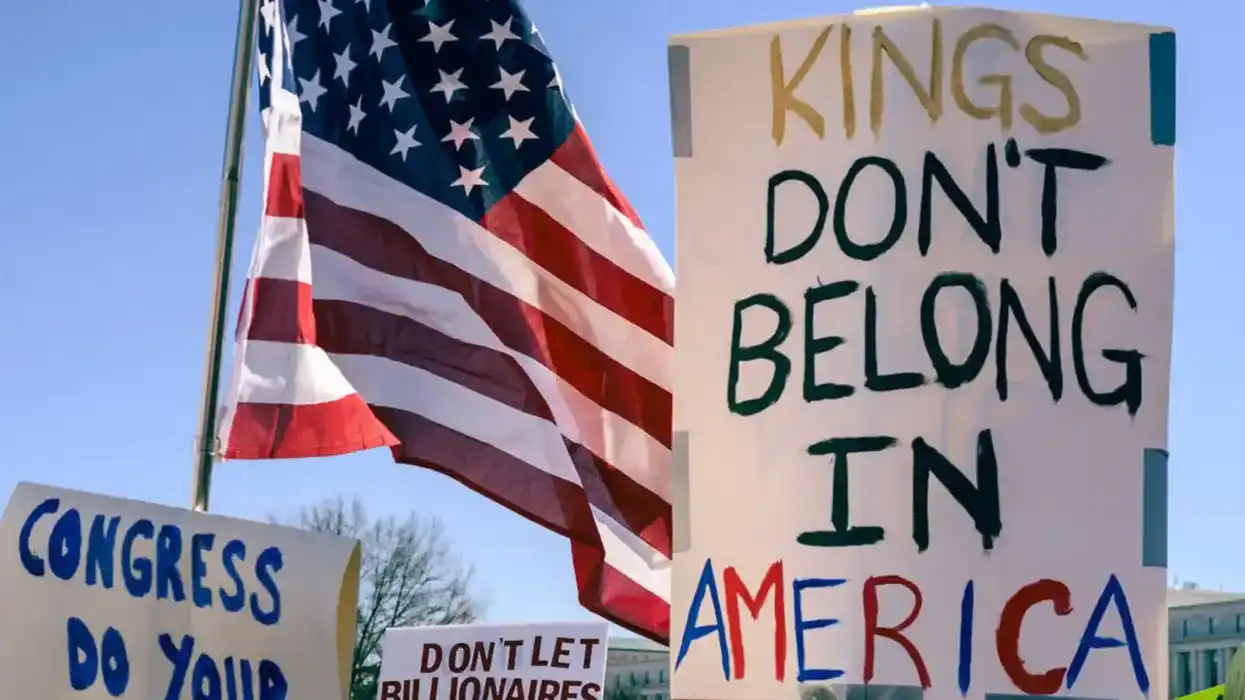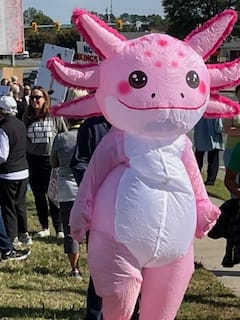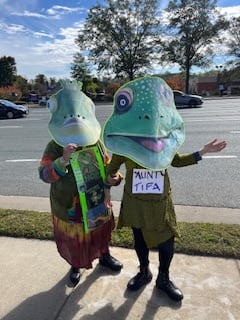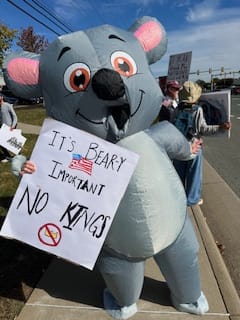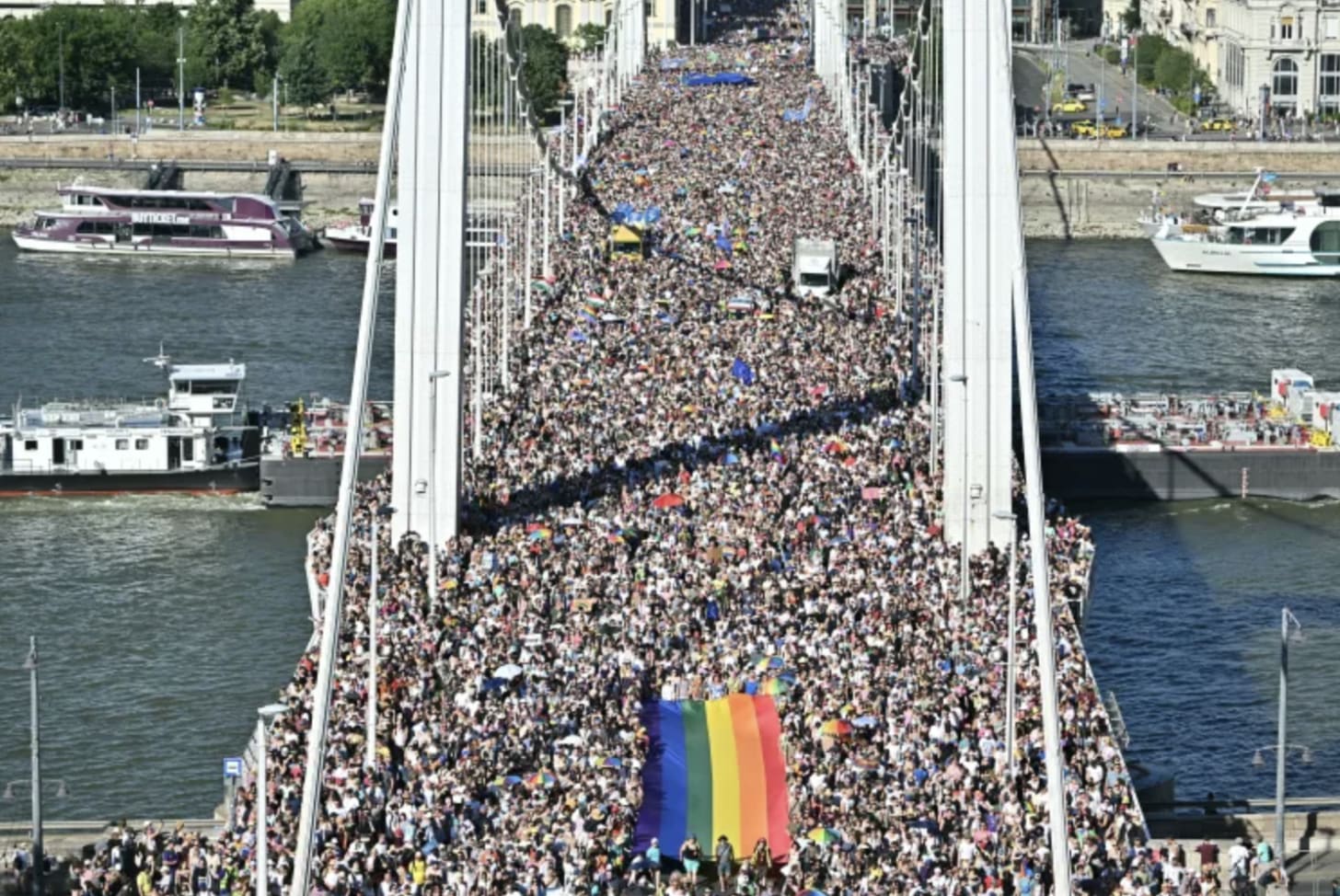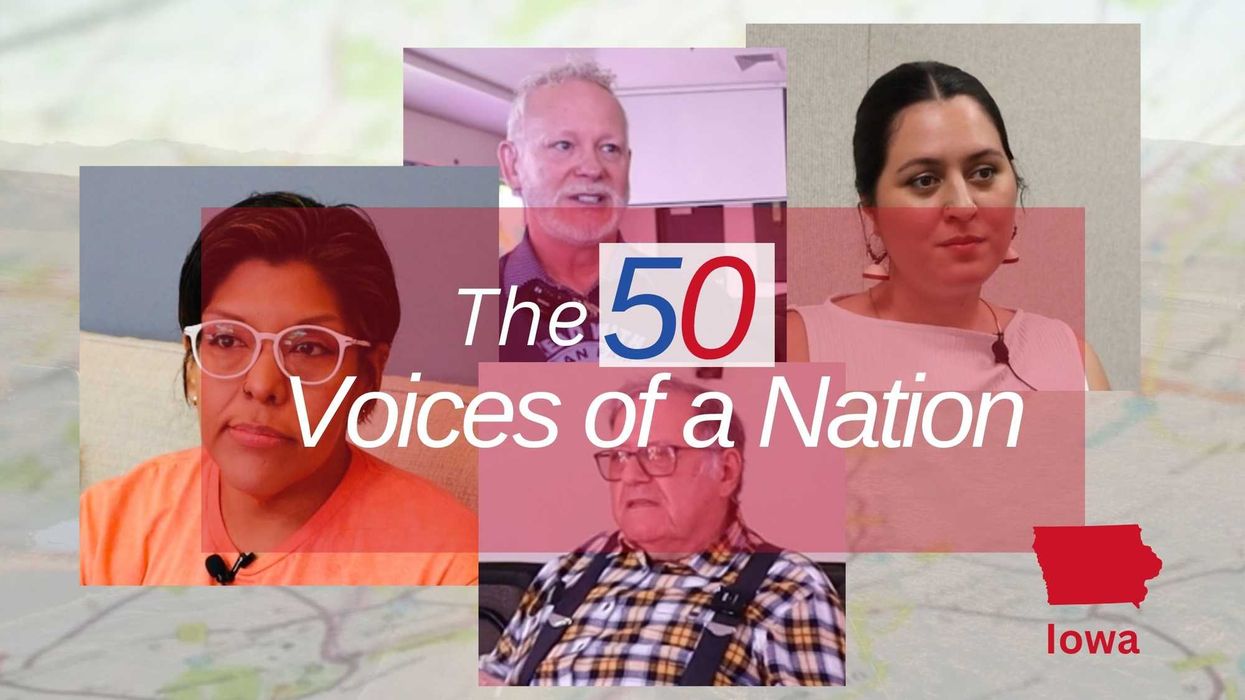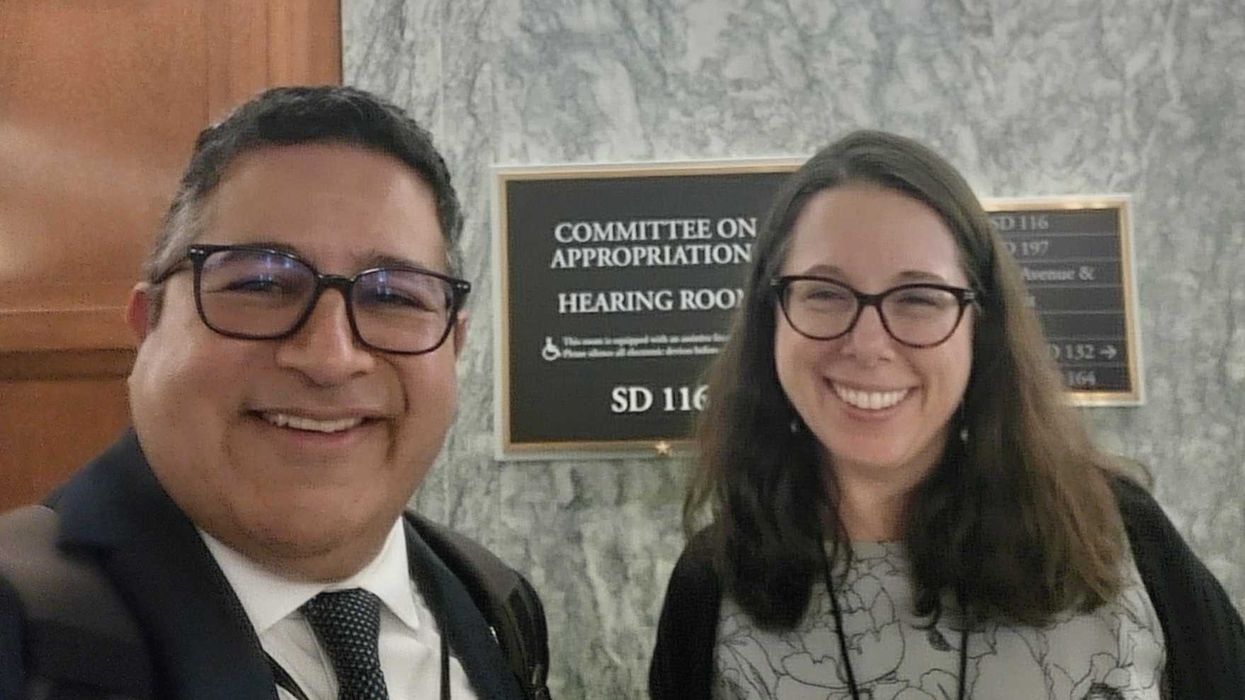They came with baby strollers and walkers—young and old, rich and poor, entrepreneurs and socialists, the quiet and the outspoken. But they came. In more than 2,500 cities and towns—some gatherings as small as five, others as large as 300,000. And they rallied around a concept as American as apple pie: that we are a nation of laws, not of kings. They came to protest a government that continues to trample fundamental rights while attempting to rule by executive fiat.
G. Elliott Morris, a data journalist formerly associated with FiveThirtyEight who now publishes the “Strength in Numbers” Substack, places total participation, based on numbers gathered by independent Atlanta-based science newsroom The Xylem and the Crowd Counting Consortium (CCC), a joint project of Harvard’s Kennedy School of Government and the University of Connecticut, at between 5 and 7 million, perhaps the largest mass protest in since 1970. People can quibble with the actual number, but, in some ways, it doesn’t matter. The day’s importance lies in the growing participation in these events (Oct 18 numbers greatly exceeded the first “No Kings” protests of last June) and shows that dissent is large and exists in all parts of this nation.
What Protest Were You At?
The Trump team’s reaction was predictable, aimed at discrediting the protesters and minimizing their impact. Republican governors Glenn Youngkin of Virginia and Greg Abbott of Texas invoked the specter of violence, mobilizing their state National Guards ahead of the demonstrations. Their fears proved baseless.
House Speaker Mike Johnson and Majority Leader Steve Scalise of Louisiana dismissed the gatherings as “We Hate America” rallies, with Johnson claiming they were organized by “the pro-Hamas wing and, you know, the antifa people.” Had they watched any coverage, they would have seen countless American flags and handmade signs declaring, “I love America.” The only “antifa” present were several women in whimsical costumes calling themselves “Aunt Tifa.” Add to that the many inflatable animal suits bouncing through the crowds, and it’s clear organizers sought peaceful protests—with a touch of humor.
At first, the White House appeared to dismiss the protests, responding to a press inquiries with a curt “Who cares?” That tone soon shifted when Trump asserted that he is “not a king,” followed by the release of an AI-generated video depicting him flying a jet labeled King Trump and dropping a brown substance onto protesters below. Fox News and conservative blogs scoured footage for signs of unrest, highlighting a few isolated incidents and the occasional inappropriate display of First Amendment expression—but found little evidence of actual violence.
Does It Really Make a Difference?
The protests come at a key moment. Despite President Trump’s low approval ratings, the opposition has lately seemed dispirited—and with reason. Each day brings another outrage: the indictments of political opponents, continued attacks on universities, and a Republican Congress that has abdicated its constitutional duty to check the power of the executive. The judiciary has provided only a modest counterweight. Trump critics continue to win cases in the federal courts, but many of these victories have been temporarily blunted by the Supreme Court’s shadow docket of unaccountability. Some even question whether the coming midterm elections will be open and free, and whether the recent federalization and deployment of state National Guards into several American cities are early tests for future executive actions that could undermine the right to choose our representatives.
Evidence suggests that public protests are more widespread —and draw more participants—than during Trump’s first term. Yet critics continue to ask: Do these protests make a difference? While it may be hard to point to direct policy changes from any single event, last Saturday’s demonstrations, along with actions surrounding them, offer reason for cautious optimism.
Without protests, actions that previously would be viewed as outrageous take on an air of normality. Moreover, mass protests can transform not only how the public perceives the opposition, but how participants see themselves. Protesters cease to be passive witnesses to the erosion of freedom and instead become active agents of change. When peaceful, such demonstrations lend legitimacy to dissent—and make it easier for others to join in.
We Have Done This Before
America has a rich history of nonviolent protest. Our independence would not have been won without widespread civil disobedience to and noncooperation with British rule that began with boycotts in 1765. Colonists refused to buy British goods and stopped exports to England. They refused to sit on grand juries organized by the crown to punish resistant colonists. And in the early 1770s, they created the Committees of Correspondence in each colony (the Virginia House of Burgesses was among the first to do this—in 1773) that led to the formation of provisional governments that coordinated elections, organized resistance, and functioned as defacto alternatives to British rule. All this activity occurred prior to the exchange of gunfire at Lexington and Concord in 1775.
Both the labor and women’s suffrage movements employed nonviolent tactics to win key victories. And the civil rights movement would not likely have been effective without the use of civil disobedience and nonviolent protests.
Even today, we see dramatic elements of noncooperation that undermines the legitimacy of the Trump regime. Several weeks ago, we witnessed a rare display of unity, when virtually every major media organization — including Fox News and Newsmax — surrendered their press credentials rather than comply with the Pentagon’s new press directive that would have prevented the publication of stories not approved by the Defense Department. Seven of nine targeted universities have now rejected White House efforts to offer them more federal money if they align themselves with President Trump’s priorities. Even in some isolated cases, Republicans have chosen independence over blind obedience. The former Republican Speaker of the Virginia House, Todd Gilbert, resigned shortly after being sworn to serve as U.S. Attorney in the Western District of Virginia, refusing to compromise his independence by hiring personnel at the direction of the administration. Similarly, U.S. Attorney in Virginia’s Eastern District, Erik Siebert, resigned his post to protest pressure from Trump administration officials to criminally charge New York Attorney General Letitia James.
Economic Coercion in Action
Boycotts, another weapon in the nonviolent arsenal, are frequently criticized. But when done right, they work. The Tesla boycott tarnished the brand and is linked to a downturn in Tesla sales, an uptick in returns, and a 36% fall in its stock price in the first three months of this year. Musk has now exited DOGE. At Target, company stock plummeted 33% after its rollback of diversity, equity, and inclusion (DEI) initiatives in January prompted a massive consumer boycott. And when Jimmy Kimmel was fired, millions cancelled their Disney subscriptions and visits to the Magic Kingdom. Reports suggest that the company lost nearly $4 billion and 3 million Disney+ subscribers while Kimmel was off the air. The backlash proved so effective that even Sinclair and Nexstar—two right-wing broadcasters that had kept Kimmel silent in 60 markets after Disney reinstated his show—eventually relented and returned him to the airwaves.
The lesson for the public? Noncooperation works. And you don’t always have to take to the streets to make your voice heard.
Lessons from the World
While every case is unique, evidence from nonviolent movements abroad offers grounds for optimism. In the 1980s, Solidarity—a nonviolent workers’ movement—brought down Poland’s communist regime. In Serbia, mass protests in October 2000 eroded the loyalty of police and the public to Slobodan Milošević, leading to his downfall. Dictatorial governments in Algeria, Bangladesh, Armenia, and the Philippines have likewise been weakened or overthrown when widespread demonstrations stripped them of legitimacy and forced change. And just last December, Korea’s former Prime Minister unexpected martial law declaration was met with massive uprisings that led to his impeachment and ultimate removal.
Protests in Hungary, 2025.
Change can take time—but we can make it happen
Make no mistake: not all nonviolent movements succeed. In Hungary, for instance, mass protests have yet to transform the regime. And history shows that meaningful change often takes time—as it did during the Civil Rights Movement. While people may long for immediate results, that is rarely how progress unfolds.
For such movements to succeed, they don’t need to convert their fiercest opponents. Rather, they win by shifting the middle—turning neutrals into quiet supporters, passive sympathizers into active allies, and gradually eroding the foundations of opposition.
When people lose hope, they surrender their power—and hand control to those who would impose their will. That’s why participation in these protests matters. They remind Americans that they are not alone, and that others stand ready to defend what makes this nation unique.
This week in 1969, more than two million Americans joined the Vietnam Moratorium—the largest mass protest in U.S. history at the time. Like many other participants, it helped change my view of the possible. It took years, more marches, and immense courage to end that war. But it happened.
Restoring our democratic institutions will likewise take time and persistence—but it can be done, if we commit to it. So grab your flag, your homemade sign, your sunscreen, and head out there. The country you save will be your own.
Do Mass Protests Make a Difference? was originally published on the Substack "Fights of Our Lives" and is republished with permission.
David J. Toscano is an attorney in Charlottesville, Virginia, and a former Mayor. He served fourteen years in Virginia’s House of Delegates, including seven as the Democratic Leader.





